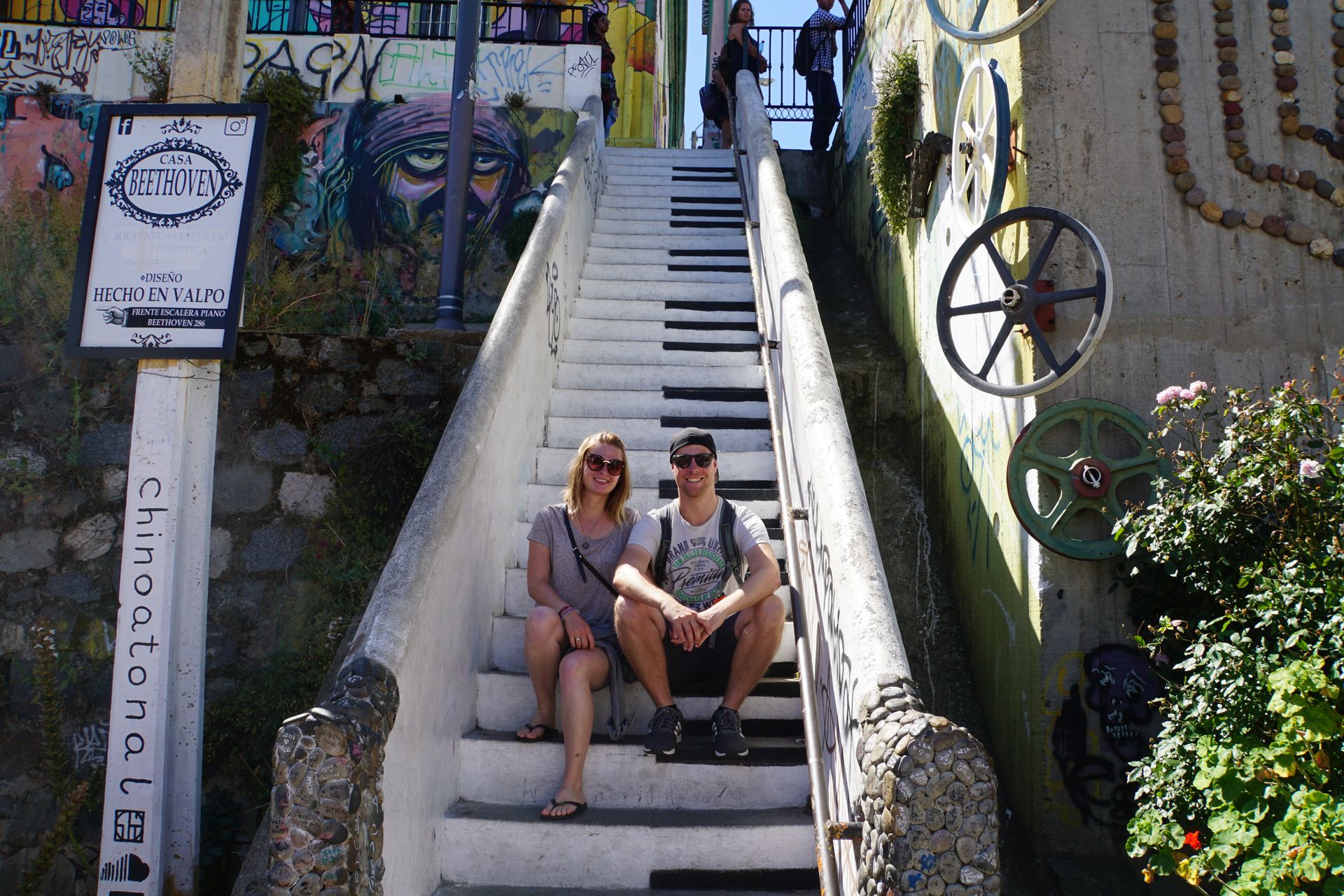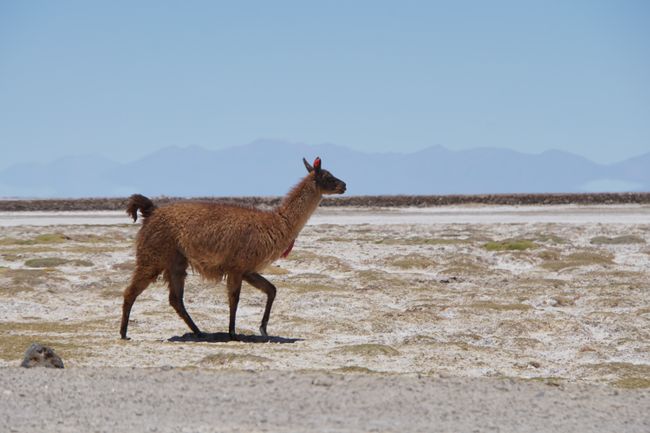San Pedro de Atacama
प्रकाशित कीता: 29.12.2018
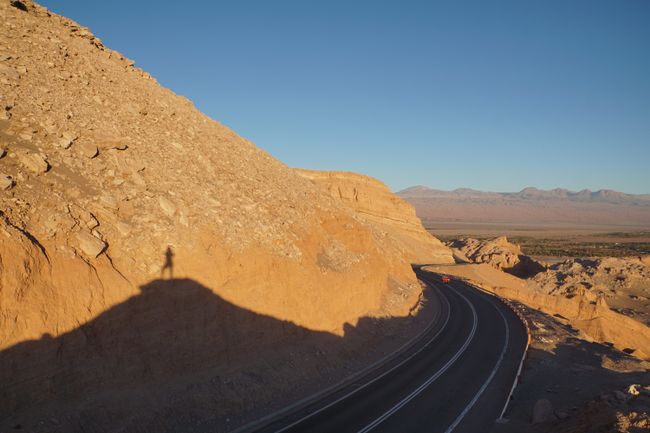
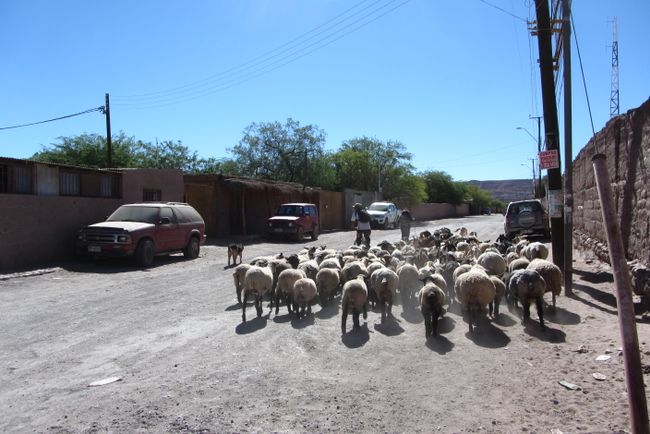
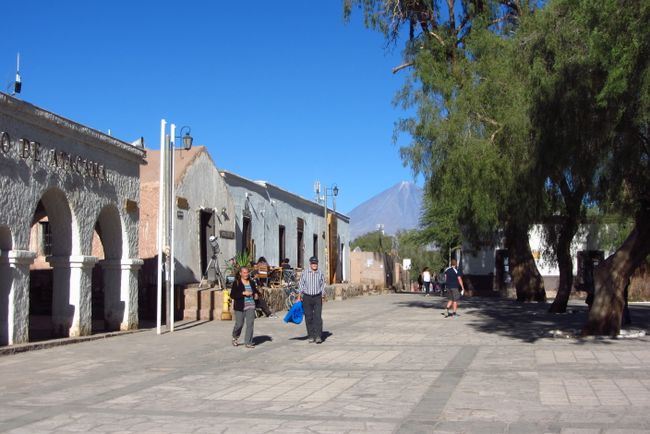
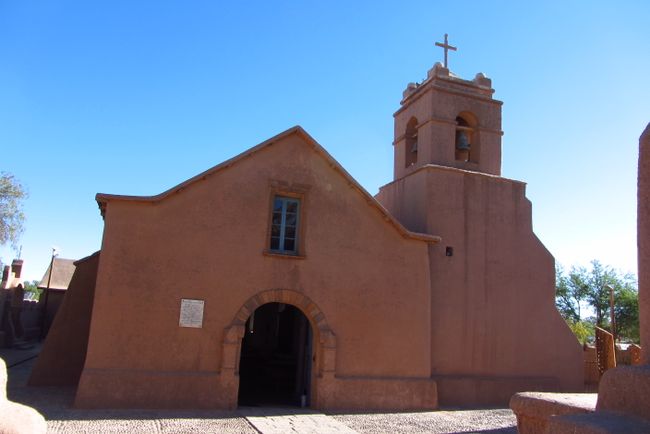
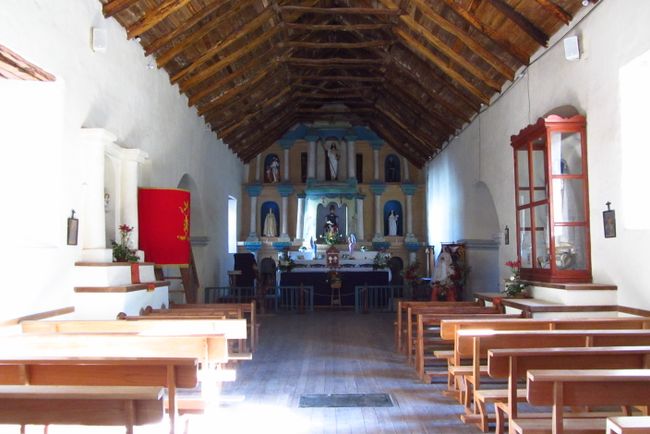
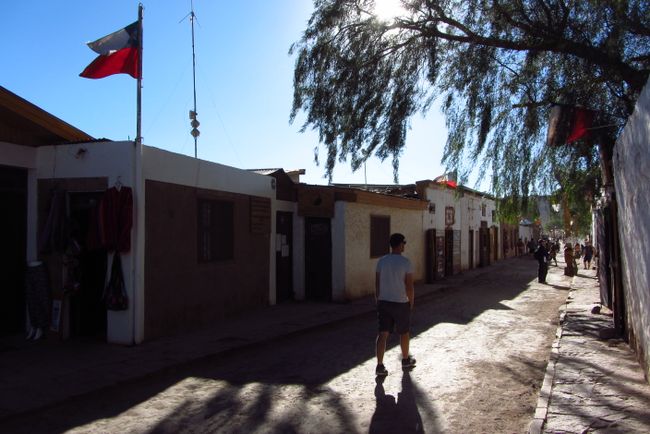
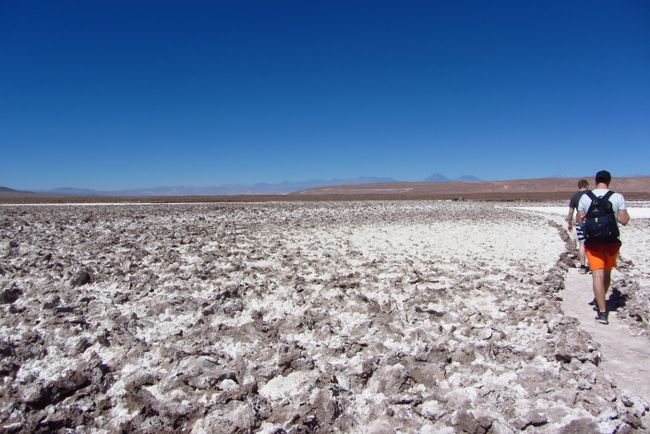
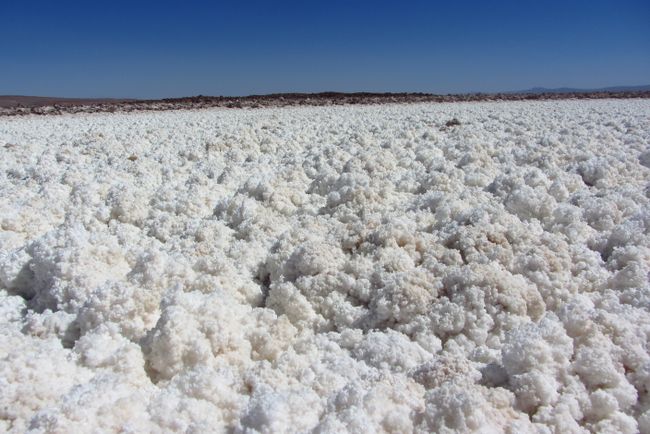
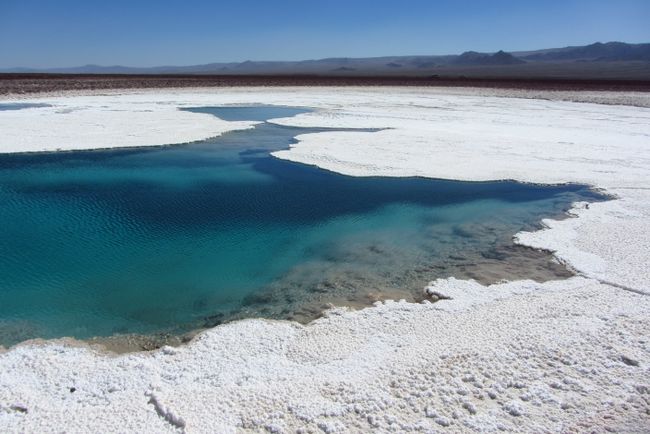
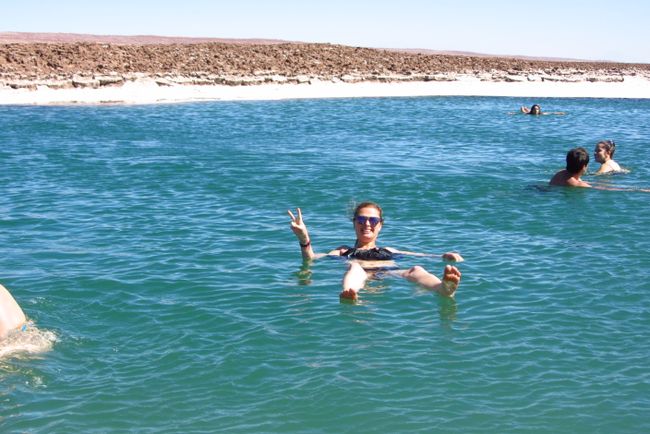
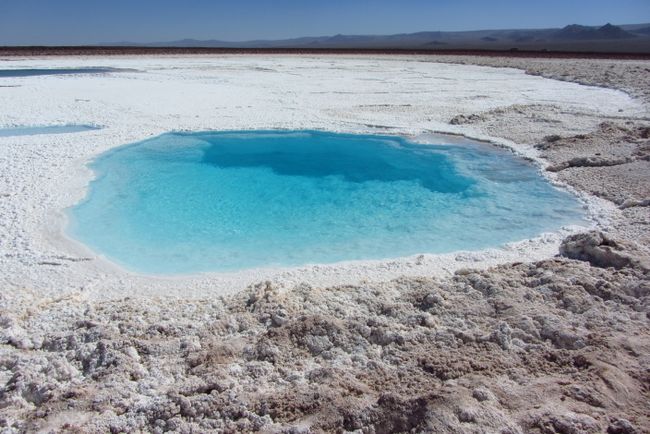
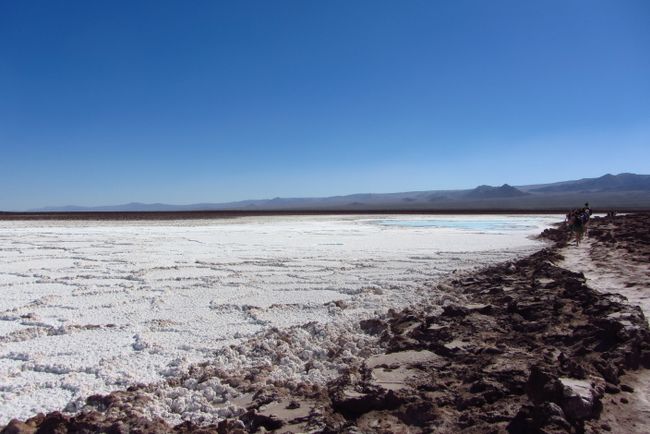
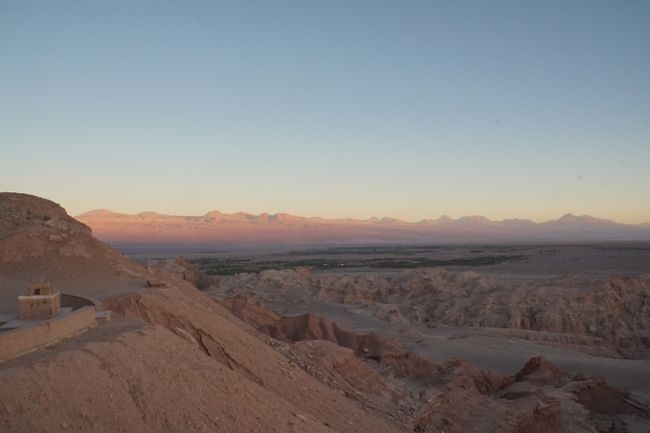
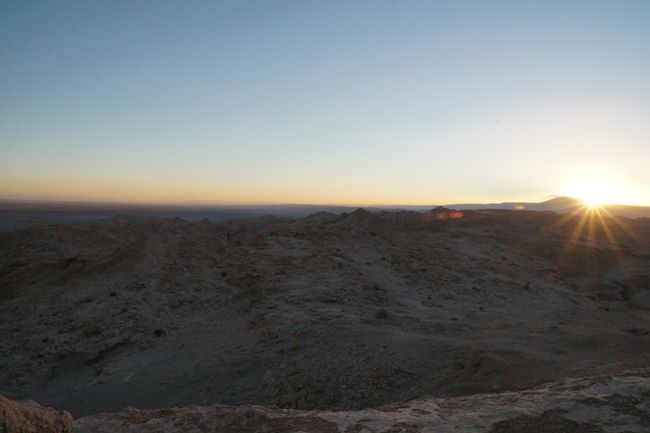
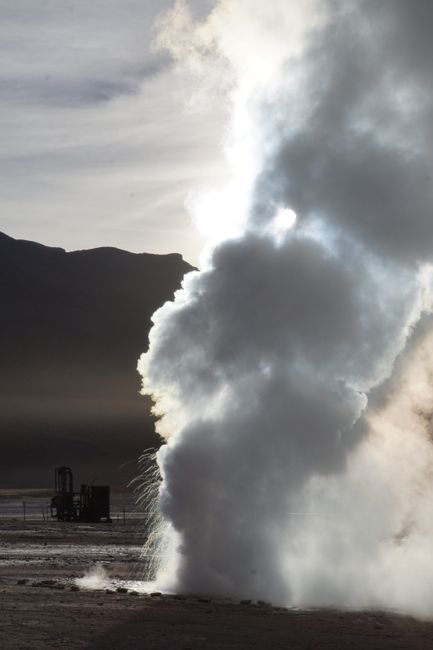
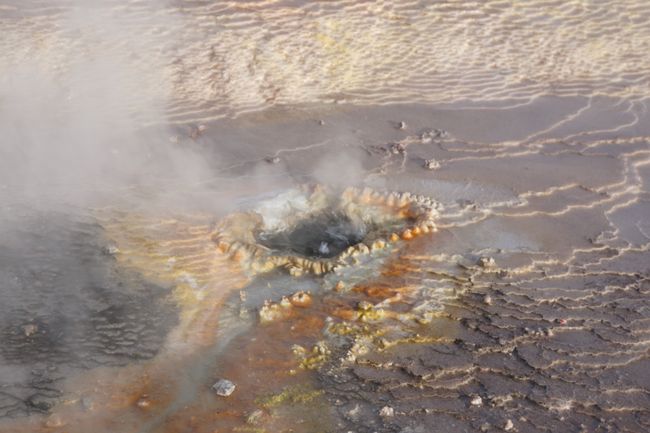
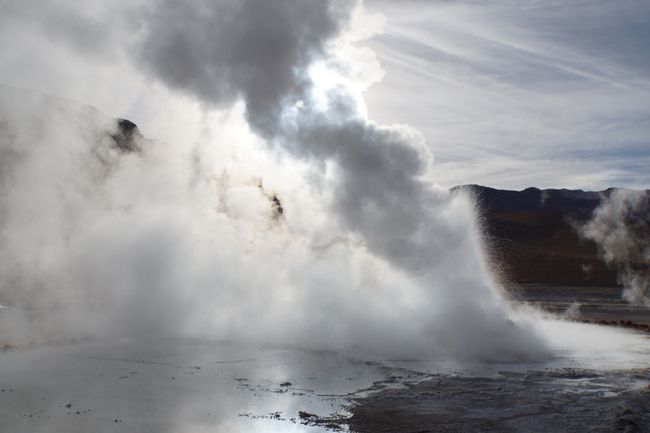
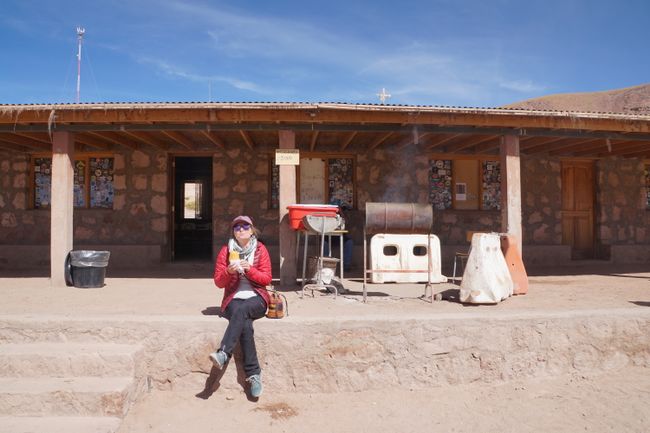
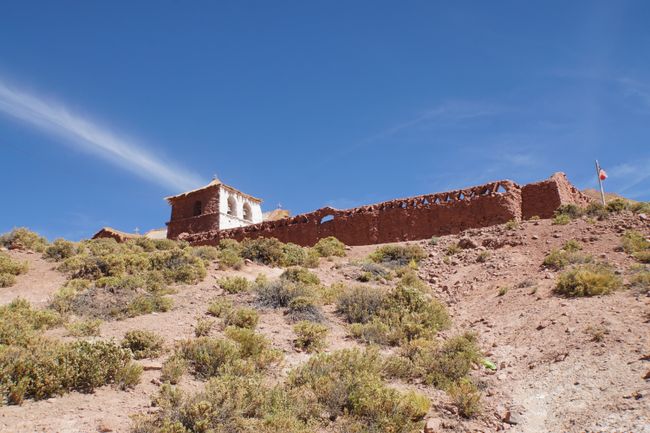
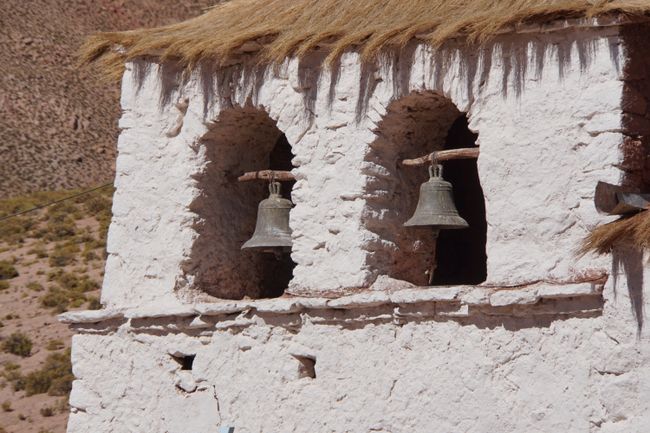
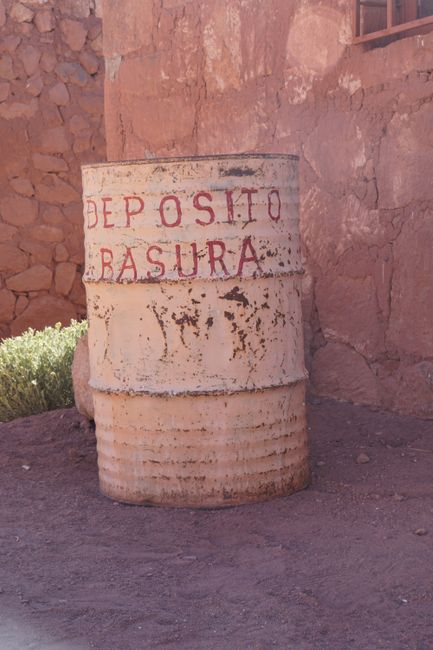
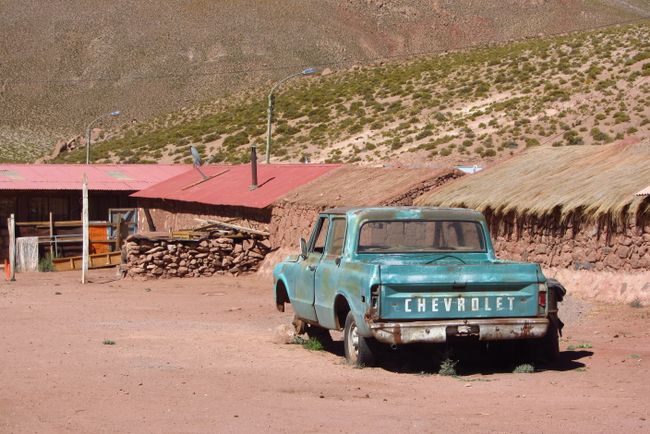
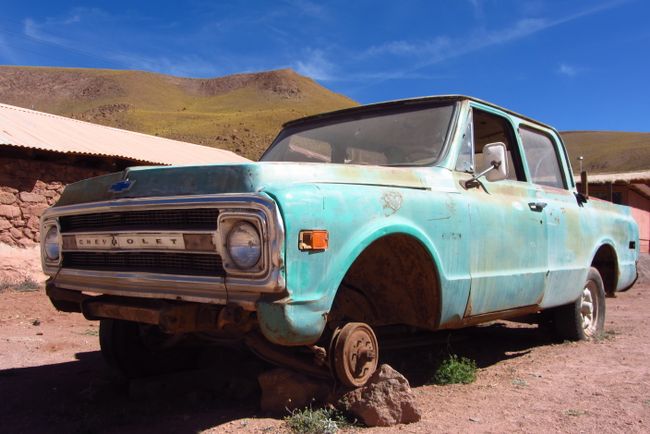
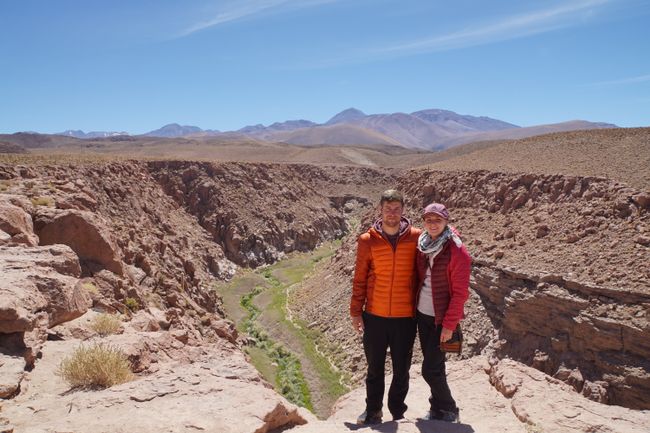
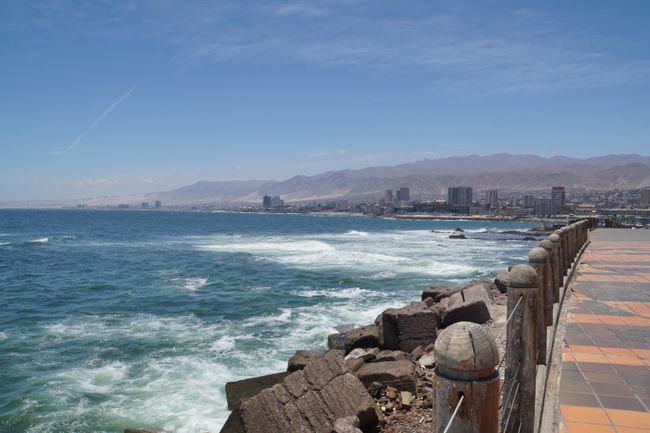
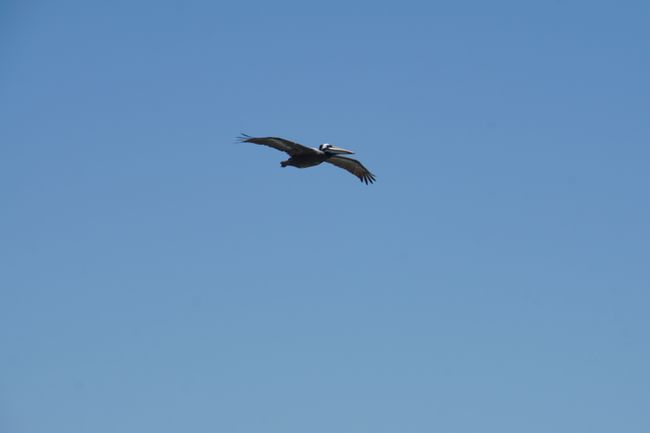
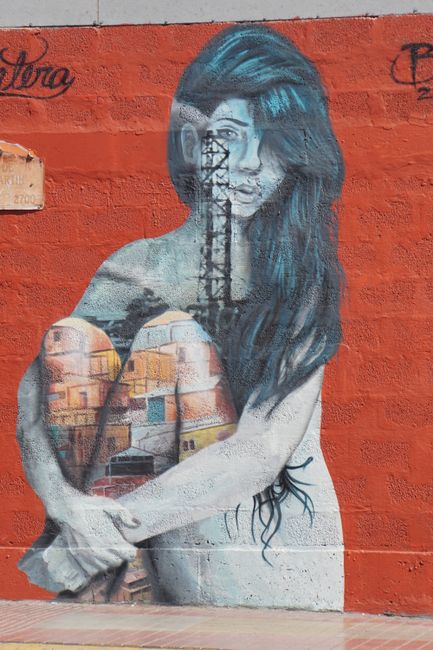
न्यूज़लेटर दी सब्सक्राइब करो
San Pedro de Atacama is a small peaceful oasis in the north of Chile and the final stop of our desert tour through the Salar de Uyuni. Apart from a small church on the main square with a cactus wood ceiling, San Pedro itself has very few attractions to offer, although the whitewashed, single-storey buildings that dominate the town center are very beautiful to look at. San Pedro is the starting point for various tours into the Atacama Desert (the driest desert in the world), the Salar de Atacama, various lagoons, the Valle de la Luna, the Valle de la Muerte, the Tatio Geysers, and of course the desert tour to the Salar de Uyuni - in the other direction. Since we have two days here, we decide to fill them with two tours. We choose the Lagunas Escondidas and the Tatio Geysers. These are two half-day tours that we undertake at around 30°C and blue skies.
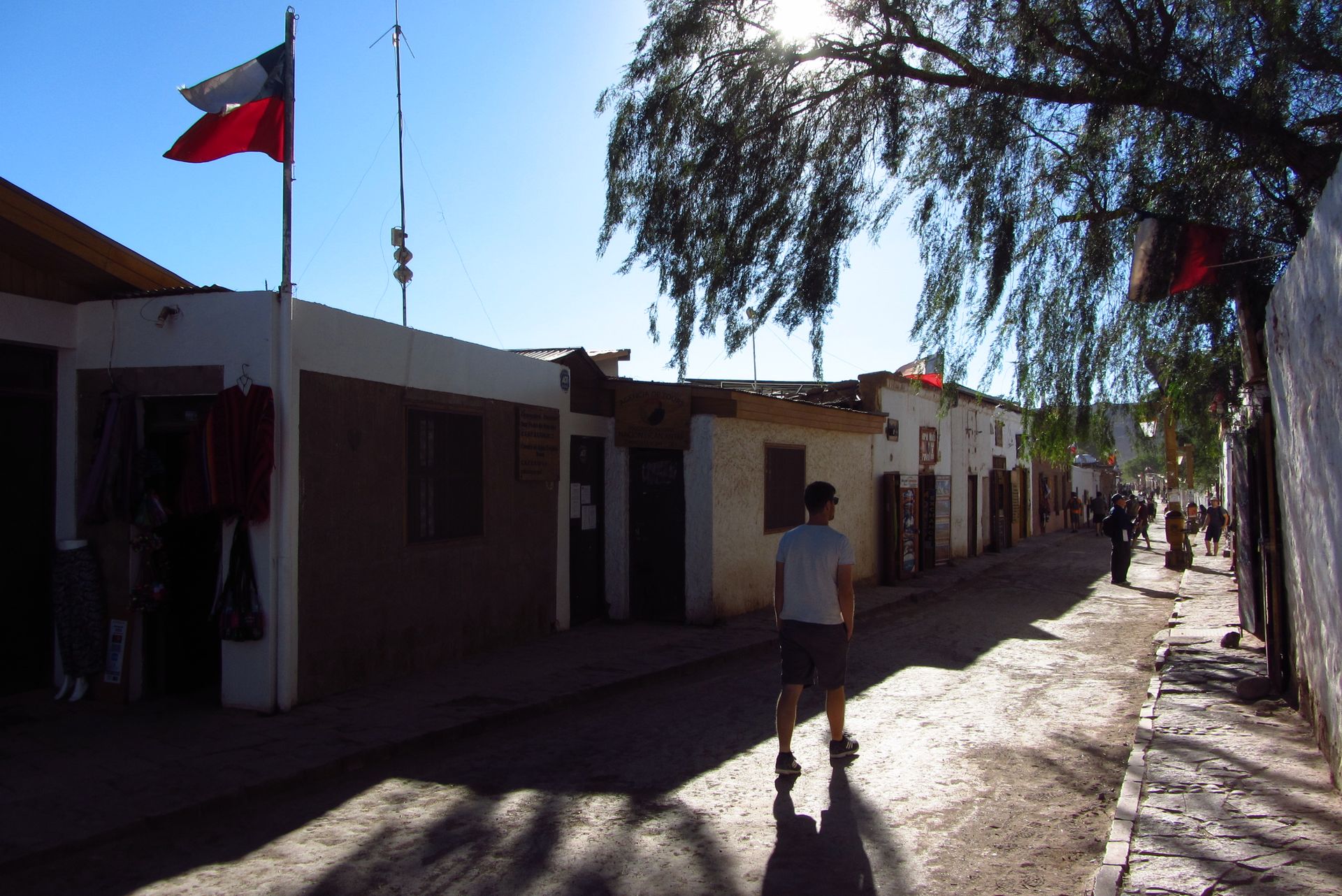
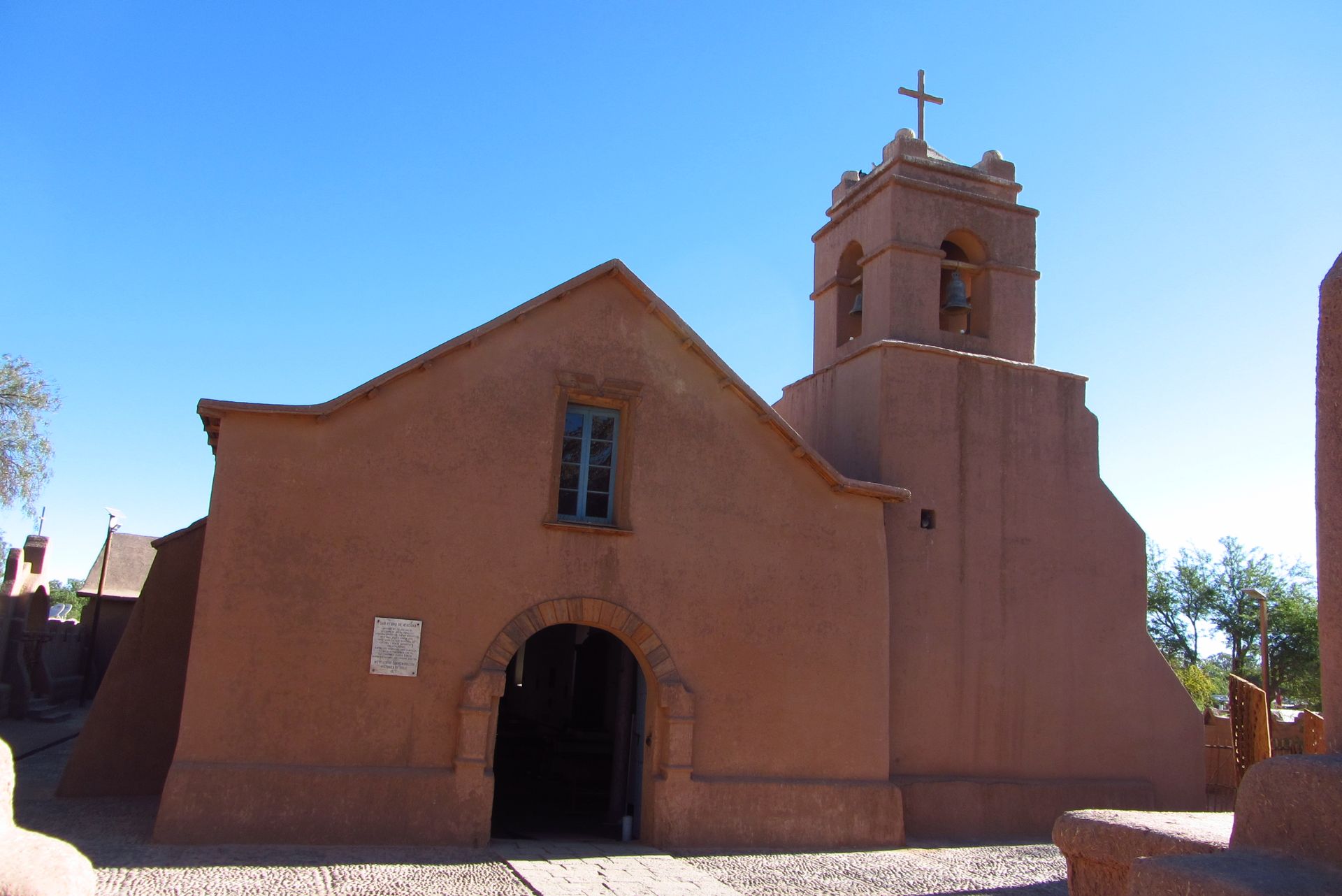
The church is the center of the town and has a very beautiful interior
Our first excursion takes us to the Lagunas Escondidas. These consist of a total of seven individual lagoons, all of which have a very high salt content. So you can "swim" in two of these lagoons and have a similar experience to the Black Sea, as you float on the surface of the water and cannot sink. We are very happy about this cooling off.

The salt crusts around the lagoons create an intensely blue color
On the way to the first lagoon, we walk a bit through a petrified coral reef. The rock formations and the brown color of the very dry environment give us the feeling of walking on Mars. The salt, which lies here like popcorn crumbs on the ground and also forms the brine in the lagoons, is by the way, as in the Salar de Uyuni, a remnant of the once-through South America. Over millions of years, the former lake dried up with seawater, the corals died, and the salt remained.
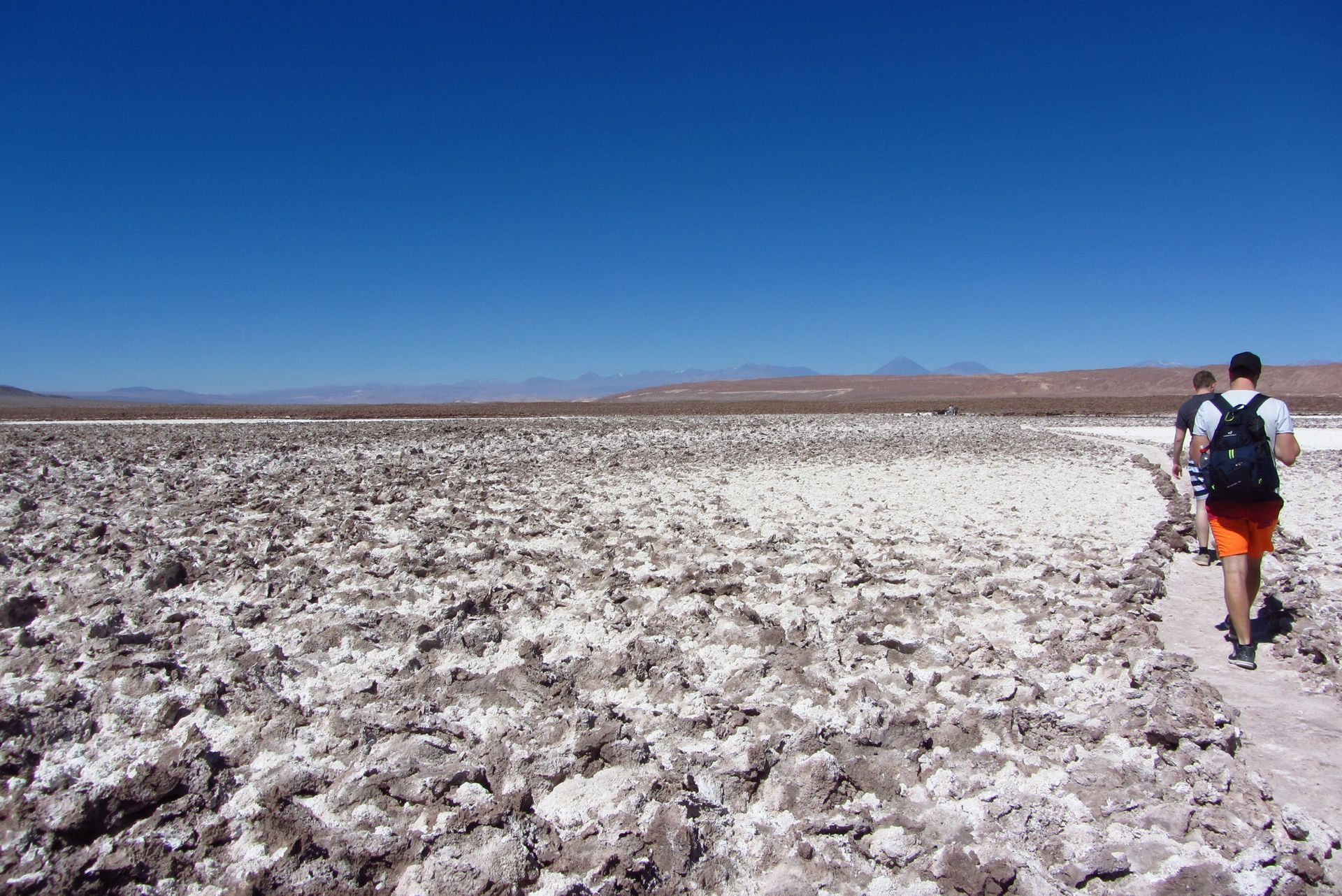
Swimming in the saltwater lagoons is incredibly funny. You actually float at the very top of the water and cannot even submerge even with effort. It is also not possible to swim properly, as the legs do not go deep enough under the water. Very crazy! Once out of the water, we dry very quickly in the hot, dry air, leaving behind a very thick, white, and opaque salt crust - the best sun protection.

After cooling off in the lagoons, we continue to a pile of stones where we get some snacks and drinks. Not visible from the ground, the shape of a two-headed llama shows itself when you view the pile from the air. Finally, we enjoy the sunset from a viewpoint, from which we can also see San Pedro.


The next morning it's time to get up early. Around 4:30 am we are picked up and drive to an altitude of almost 4,200m before sunrise. There are the Tatio Geysers, which form the third largest geothermal field in the world and the largest in the southern hemisphere. In the cold of the morning (it's -9°C for us!) you can best admire the smoking and steaming geyser field. We find it quite impressive that microorganisms have settled here in this inhospitable environment in the middle of the geyser field, probably the same ones that populated our planet as one of the first forms of life millions of years ago. It is amazing to imagine that we all descend from these single-celled organisms that form these red streaks around the geysers!

Boiling water with temperatures of up to 86°C shoots out of the ground here

After visiting the geysers, we go to the artificially created "hot" springs right next to the geyser field. With temperatures only a few degrees above freezing, we gladly take this opportunity to warm up. Unfortunately, we have to realize that these are rather lukewarm springs, so changing and drying off in the spartan changing rooms requires some effort.
On the way back to San Pedro de Atacama, we stop at the small indigenous village of Machuca. There you can buy llama skewers or goat cheese empanadas. Apart from a church and a few great old car wrecks, there is not much else to see here, but we are always surprised to see people settle in such remote areas.
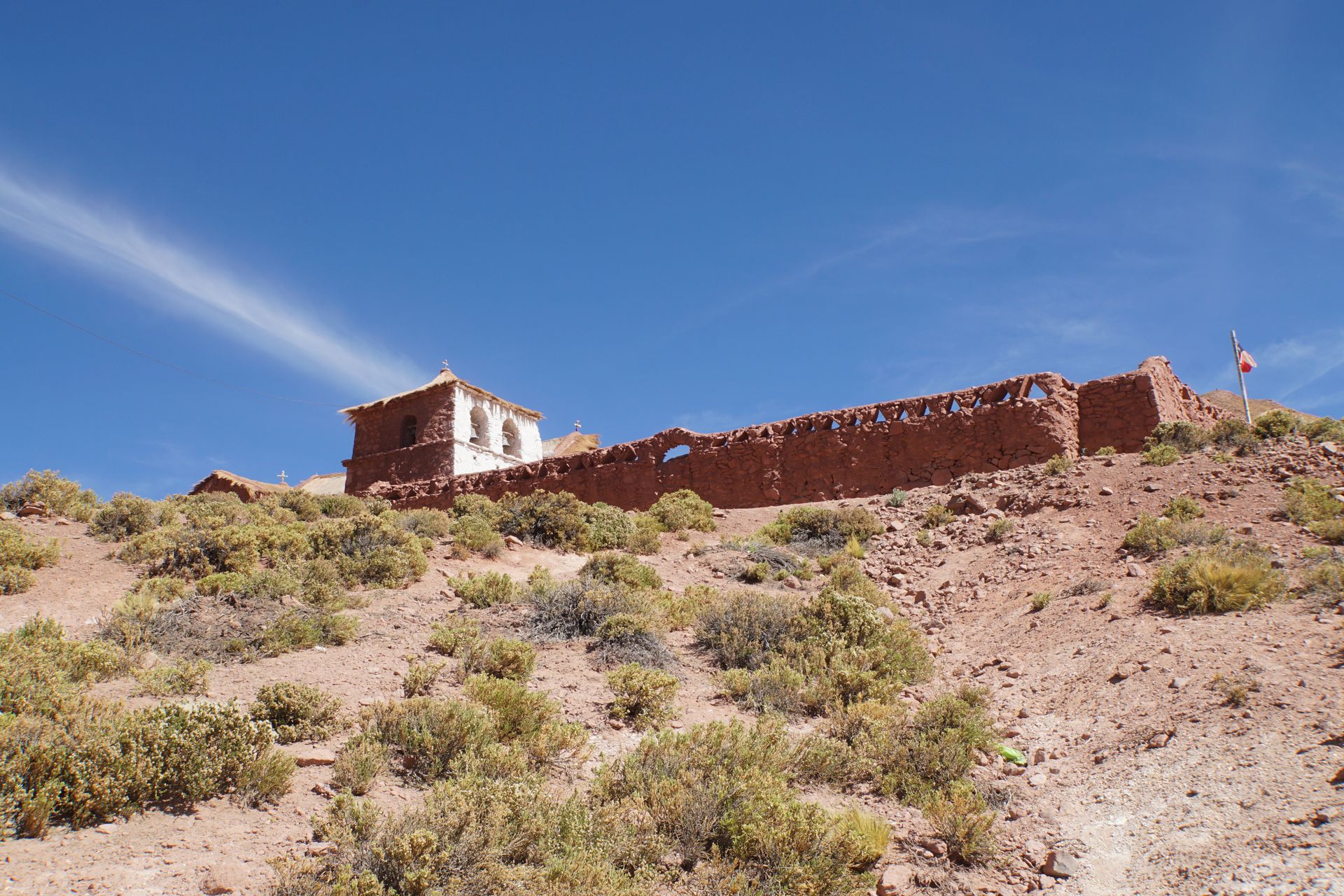
In Machuca, the original Andean architecture has been preserved
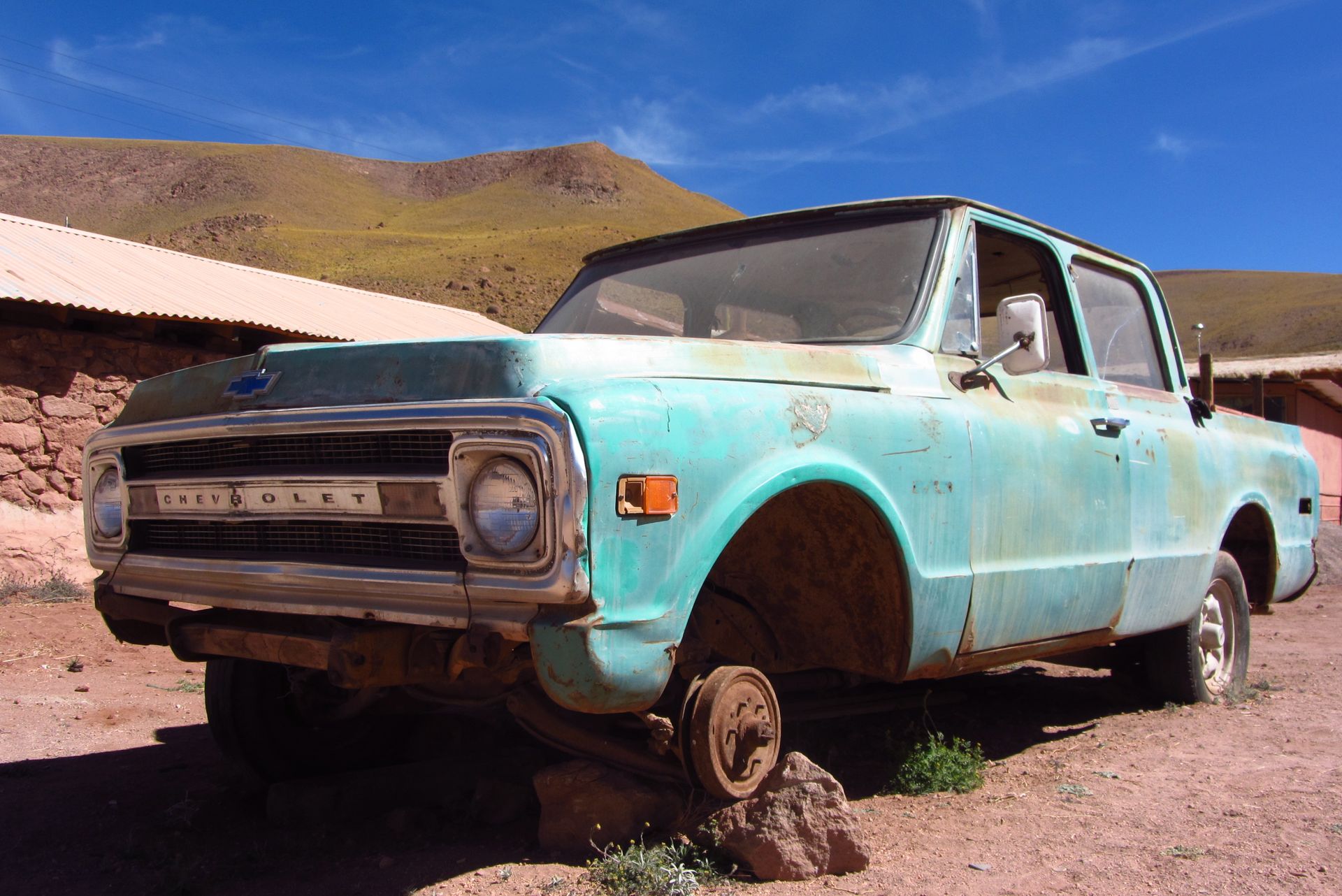
Back in San Pedro de Atacama, we have a burger for lunch and then make our way to the bus terminal. We are going to Antofagasta for one night, as our flight to Punta Arenas the next evening departs from there.
The next day we have a little time to visit Antofagasta. The city has around 350,000 inhabitants. Antofagasta is the hub where raw materials from Chile are shipped all over the world and goods from all over the world arrive in Chile. The main attractions are described in the travel guide as the Plaza de Armas and the port. The Plaza de Armas turns out to be nothing special - it is very similar to most other main squares in other South American cities. However, the promenade around the port is very nicely laid out, so we enjoy the view of the sea during a leisurely walk in the sun and observe pelicans hunting.
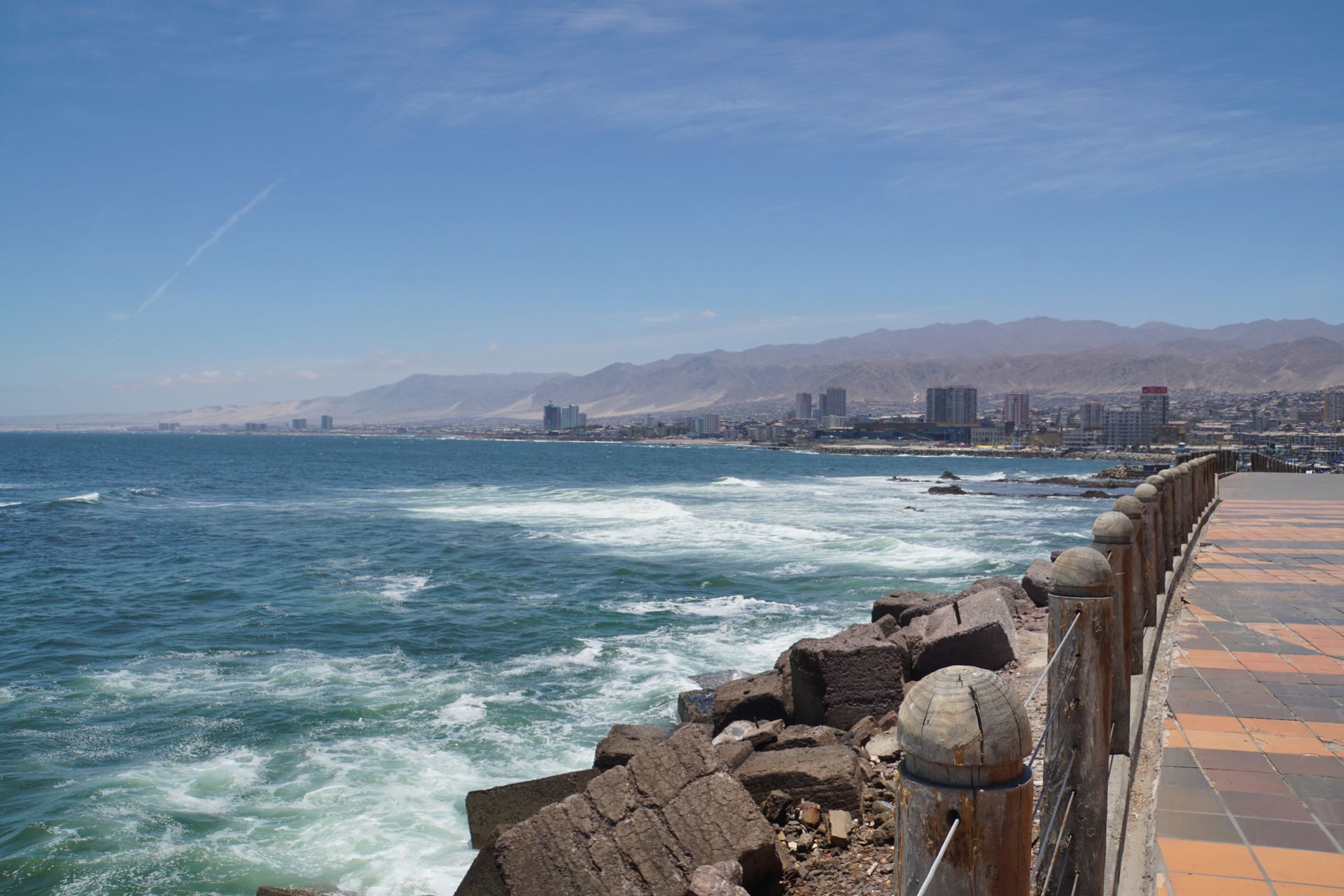
We walk along the Pacific coast

In the late afternoon, we take a taxi to the airport. We have a long night ahead of us: our flight to the south of Chile goes via Santiago, where we have a five-hour layover, so we have to stay awake all night.
न्यूज़लेटर दी सब्सक्राइब करो
परता
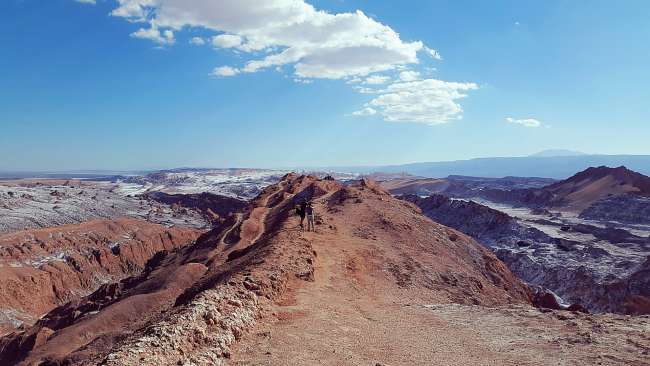
यात्रा दी रिपोर्ट चिली ऐ।
